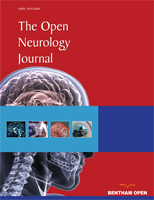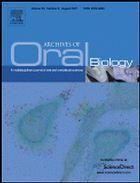
“Cannabis has held a unique place in the hearts and minds of people since time immemorial: some have exalted its properties and considered it to be sacred; others have reviled it, considering it a root cause of social evil.
The Assyrians, who lived about 3000 years ago, documented the effects of cannabis on clay tablets. They referred to the plant according to its various uses: as “azalla,” when used as a medical agent; as hemp; and as “gan-zi-gun-nu”—“the drug that takes away the mind” These seemingly contradictory properties—a substance that can be both a therapeutic agent and a corrupting psychoactive drug—have continued to puzzle us over the ensuing centuries.
As early as the 11th century, excessive cannabis use was suggested to be a cause of “moral degeneracy.” On the other hand, the ostensible therapeutic value of cannabis was documented extensively in the early 19th century by Sir William B. O’Shaughnessy, an Irish physician working in Calcutta, India.
Given the critical role of the endocannabinoid system in modulating anxiety, it is clear that compounds that can modulate this system offer great promise as therapeutic agents for psychiatric disorders. It is therefore not surprising that the concept of medical marijuana is compelling to laypersons, clinicians, and researchers alike.
While there is not yet a robust body of literature supporting any specific psychiatric indication (despite the regulatory approval in some states of medical marijuana for specific psychiatric disorders), active lines of investigation of therapeutic targets within the endocannabinoid system offer hope for better treatment options.
The evidence at present suggests that the question of whether cannabinoids are good or bad is not dichotomous—it is likely both good and bad depending on the context of use, including dose, duration of exposure, and an individual’s genetic vulnerabilities. Therefore, the challenge that remains is to distill the good therapeutic effects of cannabinoids and thus weed out “gan-zi-gun-nu” from “azalla.””
http://www.biologicalpsychiatryjournal.com/article/S0006-3223(17)32207-2/fulltext
 “Targeting the endocannabinoid system has emerged as an effective strategy for the treatment of inflammatory and neurological diseases.
Unlike the inhibition of the principal 2-arachidonyl glycerol (2-AG) hydrolytic enzyme monoacylglycerol lipase (MAGL), which leads to 2-AG overload and cannabinoid receptor desensitization, selective inhibition of the minor 2-AG hydrolytic enzyme alpha, beta-hydrolase domain 6 (ABHD6) can provide therapeutic benefits without producing cannabimimetic side effects. We have shown that inhibition of ABHD6 significantly reduces neuroinflammation and exerts neuroprotection in animal models of traumatic brain injury and multiple sclerosis. However, the role of ABHD6 inhibition on neuropathic pain has not been explored.
“Targeting the endocannabinoid system has emerged as an effective strategy for the treatment of inflammatory and neurological diseases.
Unlike the inhibition of the principal 2-arachidonyl glycerol (2-AG) hydrolytic enzyme monoacylglycerol lipase (MAGL), which leads to 2-AG overload and cannabinoid receptor desensitization, selective inhibition of the minor 2-AG hydrolytic enzyme alpha, beta-hydrolase domain 6 (ABHD6) can provide therapeutic benefits without producing cannabimimetic side effects. We have shown that inhibition of ABHD6 significantly reduces neuroinflammation and exerts neuroprotection in animal models of traumatic brain injury and multiple sclerosis. However, the role of ABHD6 inhibition on neuropathic pain has not been explored.









